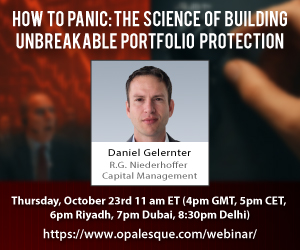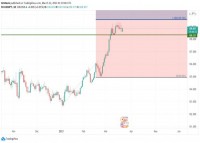|
Industry Snapshot: A Walk Thru the Graveyard A 2003 paper by Ross Barry, from Macquarie University in Sydney, once explored the extensive 'graveyard' of alternative investment products, not for morbid curiosity but rather to identify the reasons for their closure, potential indicators for investors (i.e. early signals), as well as to determine the impact of such data (or lack thereof) in portfolio modelling. Such analysis can yield equally important information as it pertains to the construction of Shariah compliant portflios and the effective monitoring of individual investment vehicles. The key difference however is the dataset avalable is far more constrained, the fund universe being much smaller and publicly available data on obsolete funds being very difficult to find (in fact there is but one database that has attempted to include obsolete funds in its coverage, wherever possible). One must wonder if such type of analysis (or at least sincere attempts) are being made at all. We are left with a rather unelegant option of analyzing individual cases. This is certainly useful (better than no analysis at all) but the caveat here is that specific cases will be full of idiosyncracies and therefore generalizations would be much more difficult to make. Barry explored issues such as survivorship bias and instant history bias on a fund universe of 2,200 products. In contrast, the casualties in the Islamic finance arena are few and far in between, but we can identify some of the root causes for their demise: The expensive ETF syndrome The adjunct figure tells the story, it outlines a sample track record for a Shariah complaint long/short equity hedge fund (now defunct) and as a matter of comparison we plot an Islamic equity index (DJIM US index). While the very essence of alternative products is uncorrelation (i.e. it is absolutely incorrect to compare them against a long-only index) we pair them together so as to highlight how similar the hedge fund behaves versus the passive benchmark. To add insult to injury, the exotic actually underperforms the broad based index. This would have little relevancee if it where not for the fact that alternatives don’t come cheap. In this case the classic '2 and 20' fee structure meant that even with zero performance the management costs would have been at least twice as high as those of a typical mutual fund and certainly higher if compared to that of an ETF (which would have yielded a very similar risk-return profile). The end result being that of an expensive beta product, when a much more straight forward solution would have been equally feasible. Oddly enough the problem is not with the product itself, but rather the fact that a cheaper alternative would have delivered a very similar outcome to investors. Perhaps this meant foregoing the award for innovative deal of the year, but then again there is no award for cheaper solution of the year. The isolated incident It is no secret that many institutions have tried to introduce Islamic products to the marketplace, certainly recognized brands such as Pictet, Credit Suisse, Man Investments and others have tried. While their solutions have little to do with each other (from eastern European equities to global fund of funds) they all share a unifying factor: having been developed outside of a company-wide initiatives, instead being the output of limited or one-off exercises.They all have contributed to the graveyard at one point or another, and their risk-return performance should be analyzed in full. However, it is the success/failure of the strategic approach taken by these firms that must be scrutinized as well. Increasingly, the 'commitment level' of institutions is coming into play, with investors today trying to identify (and avoid) one-man shows or compartmentalized solutions that lack the full backing of the parent enterprise. This in turn helps discern between entities ready to deploy multiple products on a long-term basis and those merely keeping legacy products in the institutional basement. The dark horse of capital raising Al Khwarizmi, Al Qayyim, Al Crescent, Al Noor…. these are likely not your household names and for good reason. All of these barely saw the light of day. While their structure and performance require separate study, it is their limited capital (or reliance on a specific key seed investor) that carved their names in the tombstone of ill-fated products. One of these actually conceded that they discontinued their offering to “explore other oppportunities in the market” but it was clear that their capital raising efforts were either ineffective or not sufficient (their product averaged US$20 million)Many others have tried this same approach, creating the product first whilst deferring the critical capital raising efforts for later. In fact in recent years there have been some attempts at addressing the lack of effective distribution networks (and the overall lack of effective capital raising services), although the various efforts have yielded mixed results. The fact is that the Shariah compliance costs (both the setup and ongoing fees) increase the threshold required to reach a critical mass in terms of the product’s asset size. This is much more relevant for exotics (where setup costs can be quite substantial), so if a certain level of assets under management cannot be reached within a reasonable timeframe the ability to run the product just can’t be justified (regardless of performance). The list is admittedly very short, but their experiences (whether of success or failure) can provide valuable lessons for those willing and able to pick where these first-movers might have left off. Your feedback and comments are very important to us, please feel free to contact the author via email. |
Opalesque Islamic Finance Intelligence
Industry Snapshot: A Walk thru the Graveyard Bernardo Vizcaino, CAIA |
|





 RSS
RSS










